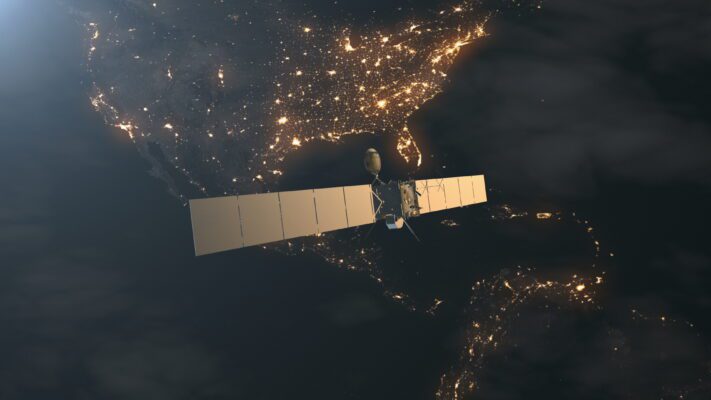Blog, counselor, GPS accuracy
GPS accuracy – what to pay attention to
GPS accuracy is an important factor when navigating with a cell phone or navigation system; it determines how correct the actual navigation or location determination is. The correct determination of the GPS position depends on many factors. It is never possible to determine exactly how accurate the positioning by satellites is; it is important that the positioning takes place under favorable conditions.
Accuracy of GPS receiver
GPS receivers rely on the global positioning system , a worldwide network of satellites that constantly send out signals that can be used to determine the exact position of the GPS receiver.
Under optimal conditions, good satellite position , few obstacles and with a current GPS receiver, a statistical accuracy of around 3 meters can be achieved. Modern GPS receivers can precisely calculate geographical positions based on satellite data, even down to a few meters or even centimeters, depending on the receiver . The more frequencies the device processes, the higher the accuracy of the calculation. However, the more precise and higher the frequency the receiver is, the more expensive it is to purchase.
At least four satellites are necessary to determine the position with high accuracy ; the necessary information can be calculated using the satellite signal.
Three satellites are necessary to calculate longitude, latitude and altitude , the fourth satellite is important to synchronize the GPS receiver clock with the satellite clocks.
If data is collected using a device’s positioning system , information can be obtained from various sources , for example mobile networks, Bluetooth, GPS or WLAN .

This is not only possible with a GPS module but also with a smartphone, meaning your own cell phone can be used as a GPS device. Regardless of whether it’s an iPhone or Android , you can carry out the basic measurements with your own mobile phone. On an Android smartphone, the accuracy can be set in three levels, which can be found in the cell phone settings area. Here you can also set whether the cell phone should use available mobile networks or WLAN for positioning in addition to GPS . Android also offers the option of using only GPS or only mobile networks and WiFi, which also has an impact on the battery performance of the cell phone. On the iPhone , no such selection is possible as on Android; here the GPS service function can only be switched on or off, so you can prohibit or allow a specific app to use GPS and access to the location in the main menu.
In addition to existing applications on the phone, a suitable app can be installed for various projects, which offers the user additional functions and GPS data.
Interference factors for position determination
Many factors can influence and impair the GPS accuracy , it is always important to have a clear sky, this does not necessarily mean clouds, these only minimally affect the GPS signal. An open field, without mountains and ravines, offers good reception conditions .
Disturbances in the ionosphere
GPS reception can be affected by various factors, mostly independent of the position of the receiver, directly in the vicinity of the GPS satellites . Solar radiation is responsible for the disturbances in the ionosphere, this atmospheric layer lies approximately 60 to 1000 kilometers above the earth’s surface. During the day, the gas molecules there are strongly ionized by the sun’s rays, which slows down GPS signals that would otherwise travel at the speed of light . The signals sent are therefore not constant and the calculation becomes inaccurate. The impairment caused by this disruptive factor also depends on the location and time of day. This error can be calculated and corrected using correction data .
Distribution of satellites

The distribution of satellites in the sky is reflected by the DOP value, DOP stands for Dilution of Precision and means “reduction in accuracy”. This value is a good indication of usable satellites ; if they are widely distributed across the sky, this means a small value and positioning with high accuracy . The position, speed and position of the GPS satellites are far more important for a good signal than clouds or thunderstorms; this only minimally disrupts the measurement. Since satellites are always moving and do not stay in one place, this value changes constantly, in ravines and valleys it increases significantly and the accuracy of the measurements decreases. A new and modern GPS receiver automatically looks for at least four satellites whose constellation has the lowest DOP value and offers the receiver a measurement with the smallest possible deviation .
shading
The term shadowing describes the poor or missing connection to a GPS satellite, meaning that no usable GPS signal can be received and determining the position is hardly possible or very inaccurate. In valleys or cities, a high level of shading and an inaccurate location can generally be expected, plus reflection from existing signals, which can further distort the GPS signal. Reflections on water, snow or ice surfaces and also on house walls can generate multiple signals that arrive at the receiver differently. These errors in the calculation ensure that the determined position is significantly next to the actual GPS location . Correction signals can be used to better evaluate and provide the receiver with a more accurate result.
Correction signals
Correction signals can increase accuracy . Modern systems, such as a Salind GPS tracker, can usually read and process these without any problems if they are available. These signals are sent by additional satellites; they do not orbit the earth but are geostationary; such auxiliary satellites can largely correct ionospheric disturbances.
GPS satellites
The positioning of the satellites is therefore particularly important for an accurate signal, in addition to the function of the devices used. The operator originally launched the GPS system for military purposes, but for many years it has also been usable for civilians with the help of compatible devices.
There are 32 navigation satellites in operation on six orbit levels , at an altitude of around 20,000 km and orbiting the earth at a speed of 14,000 km / h. This ensures that at least four, but usually six to eight satellite signals can be received at the same time. These satellites are equipped with high-precision atomic clocks and can therefore send their signal to any point.


